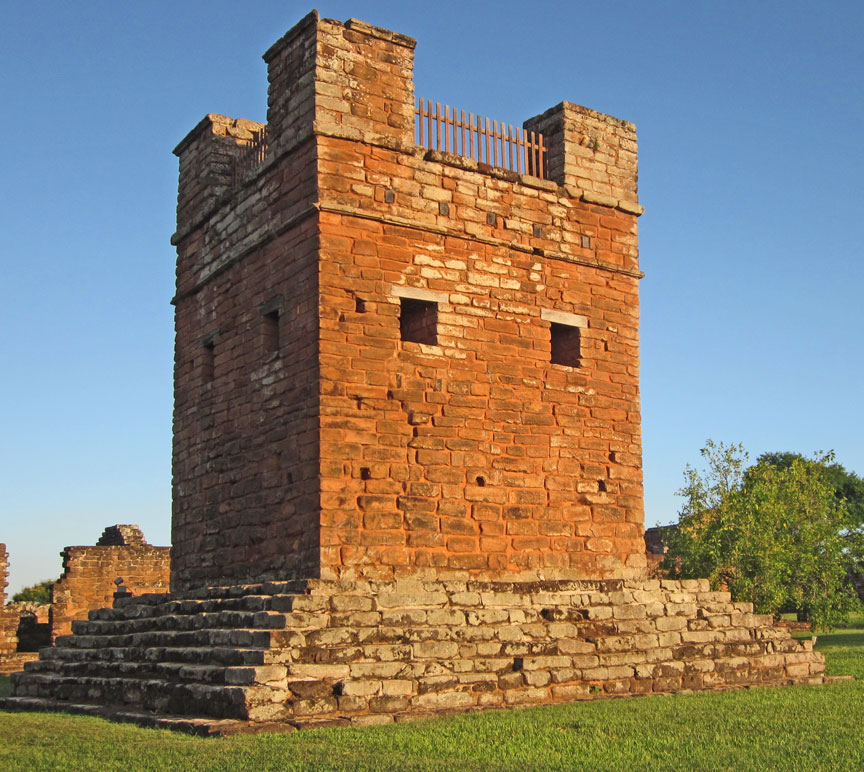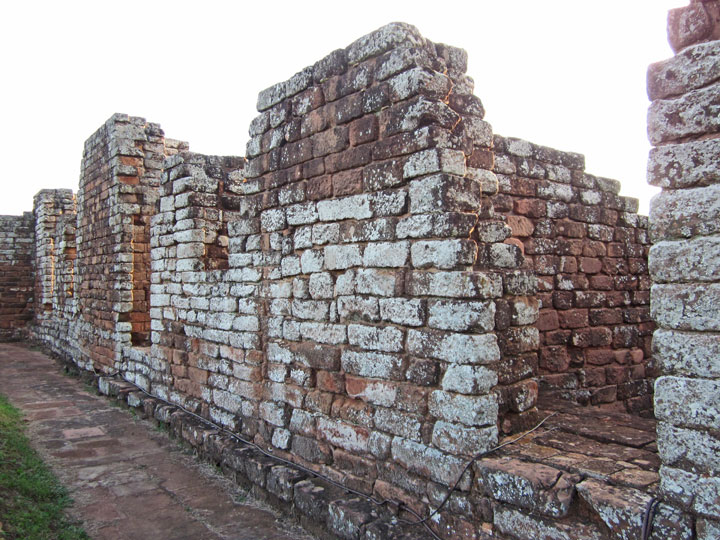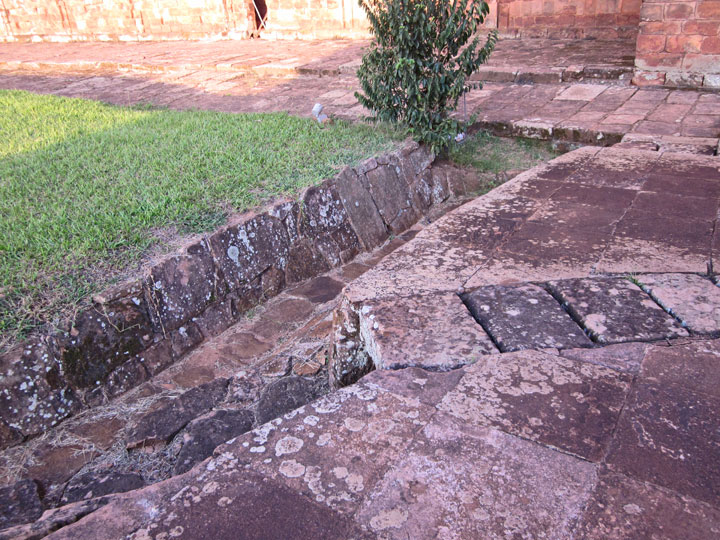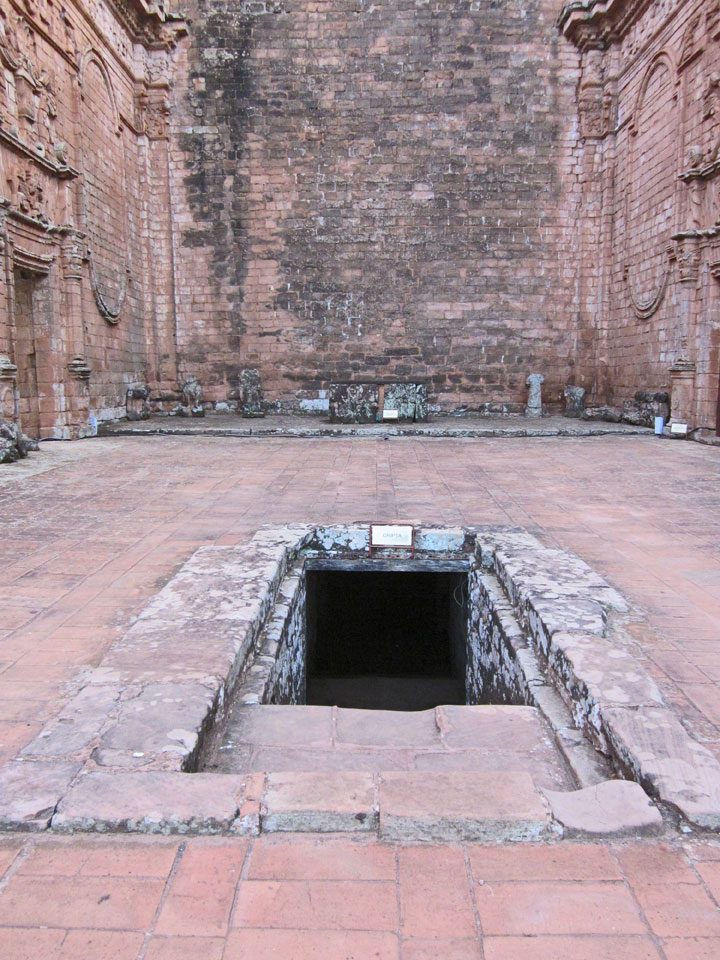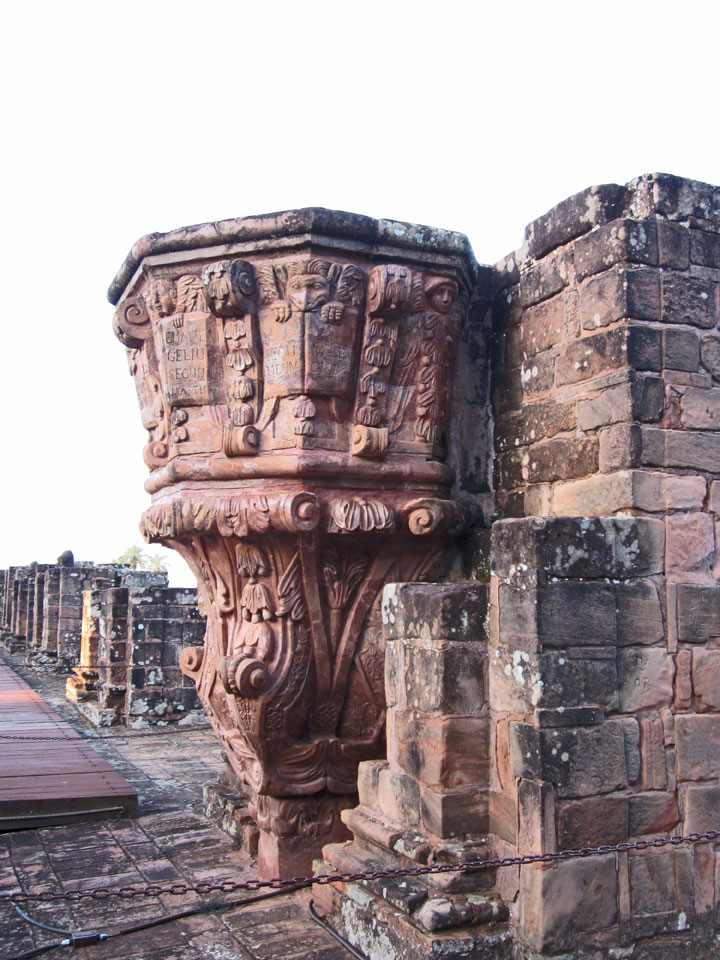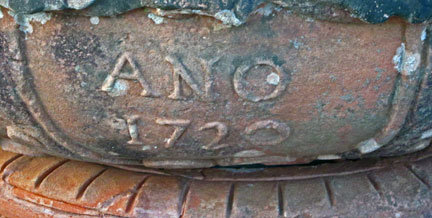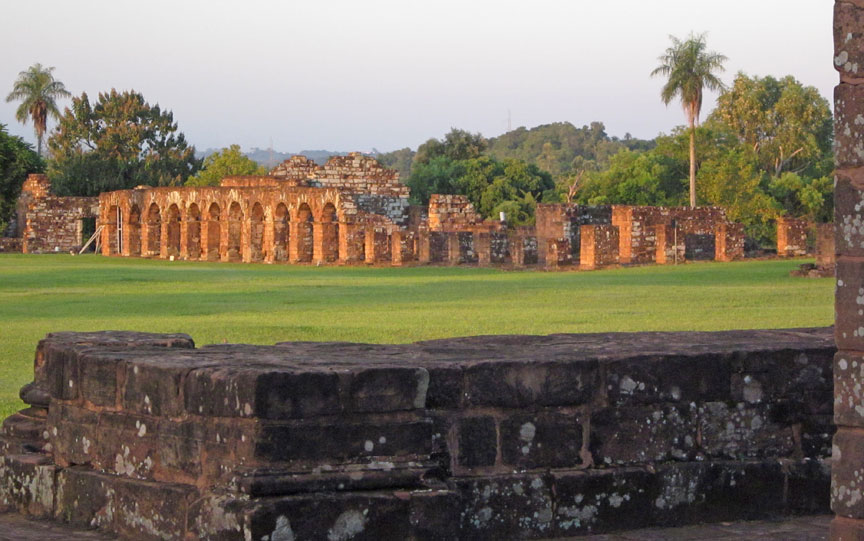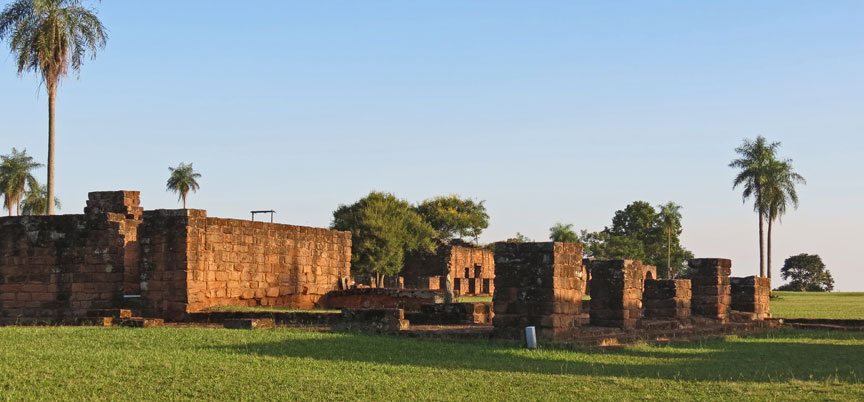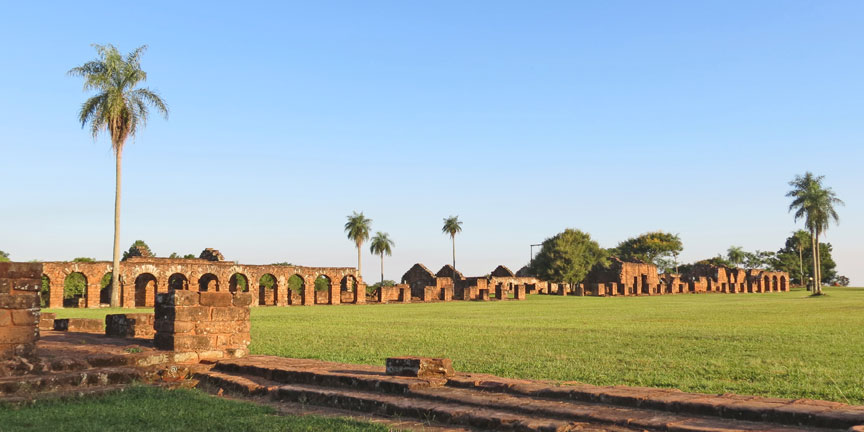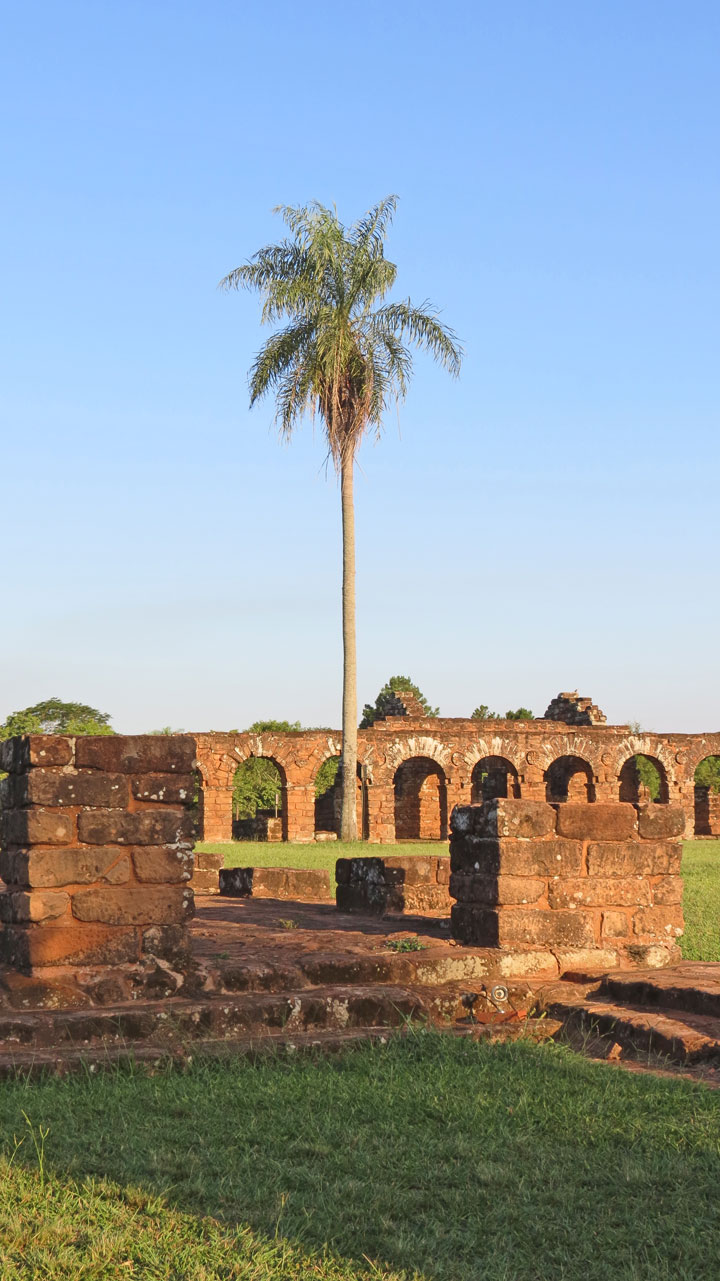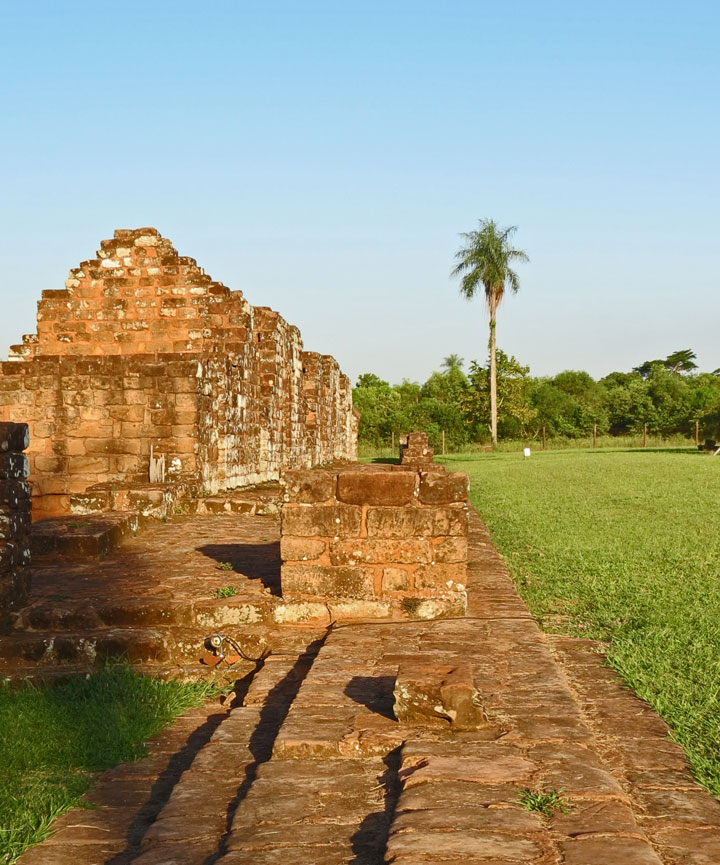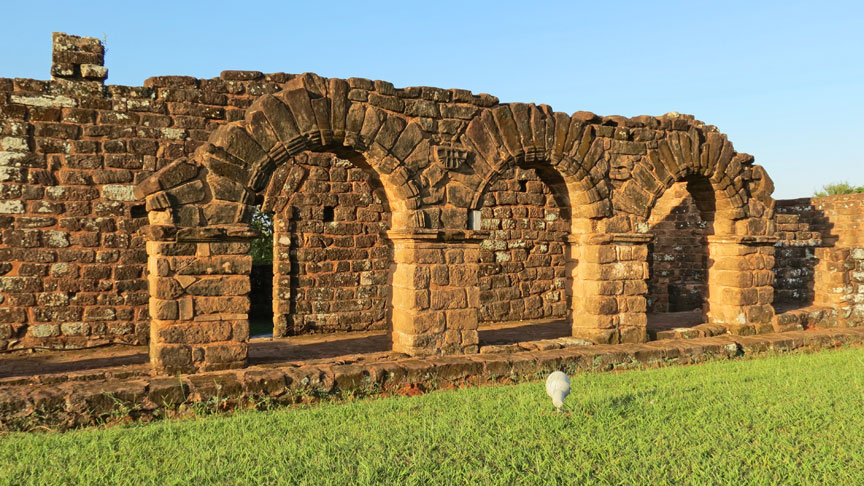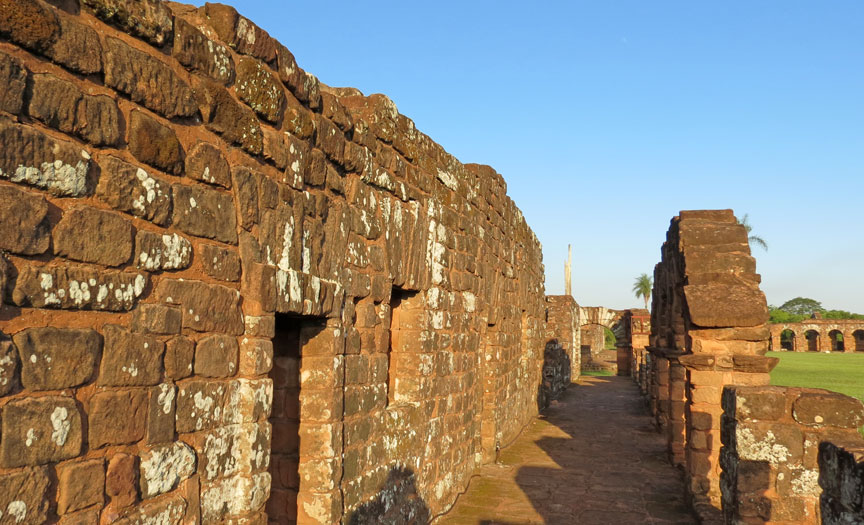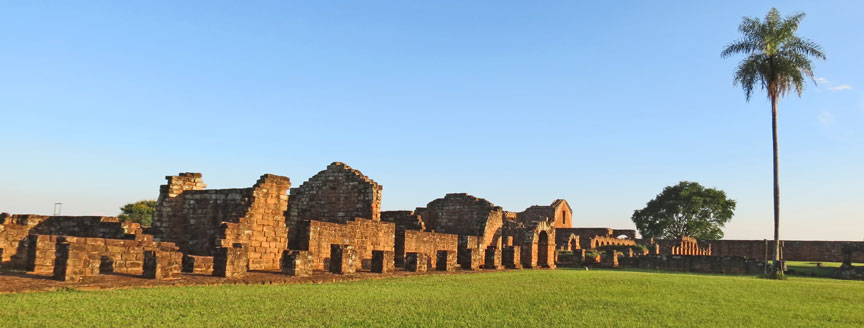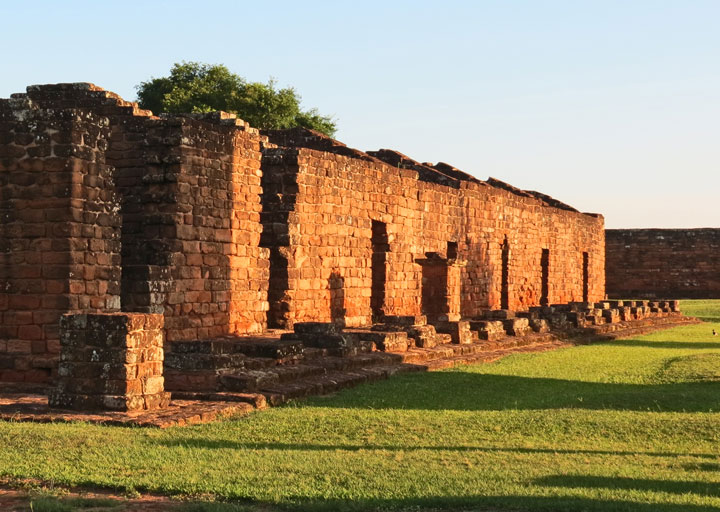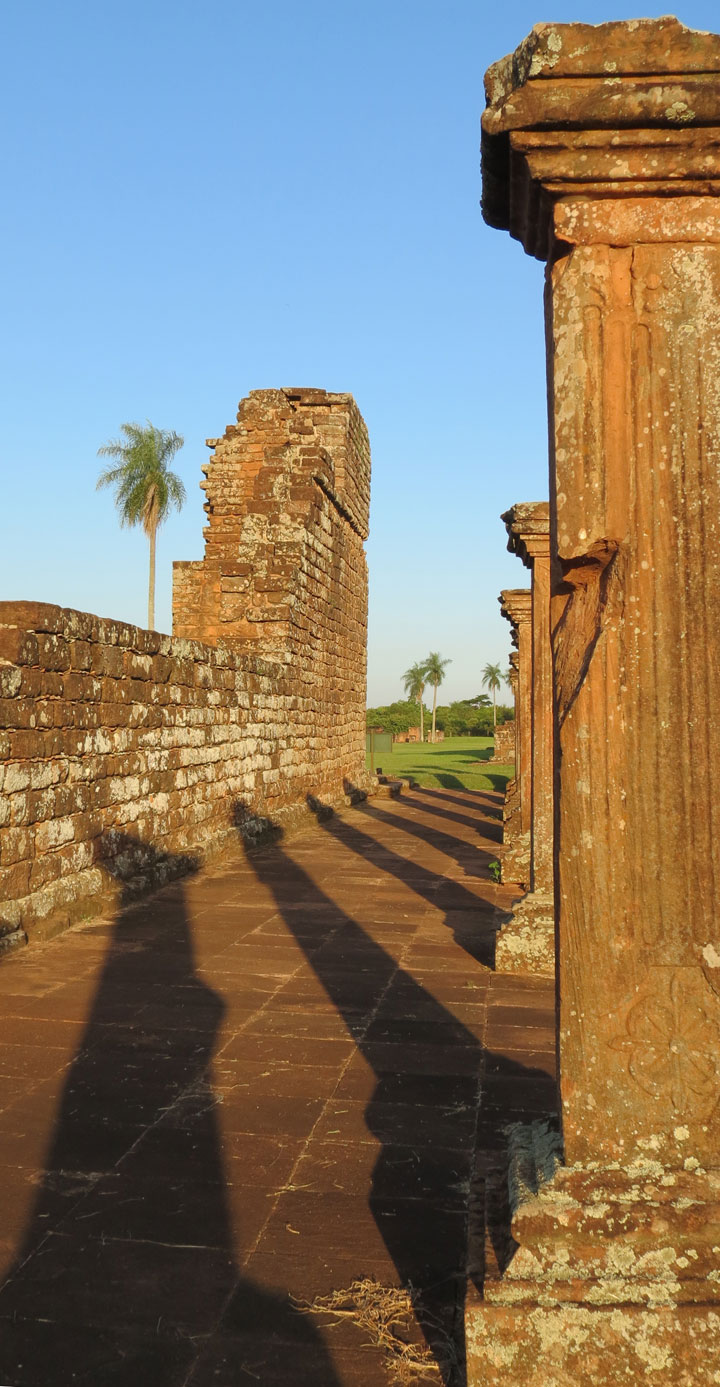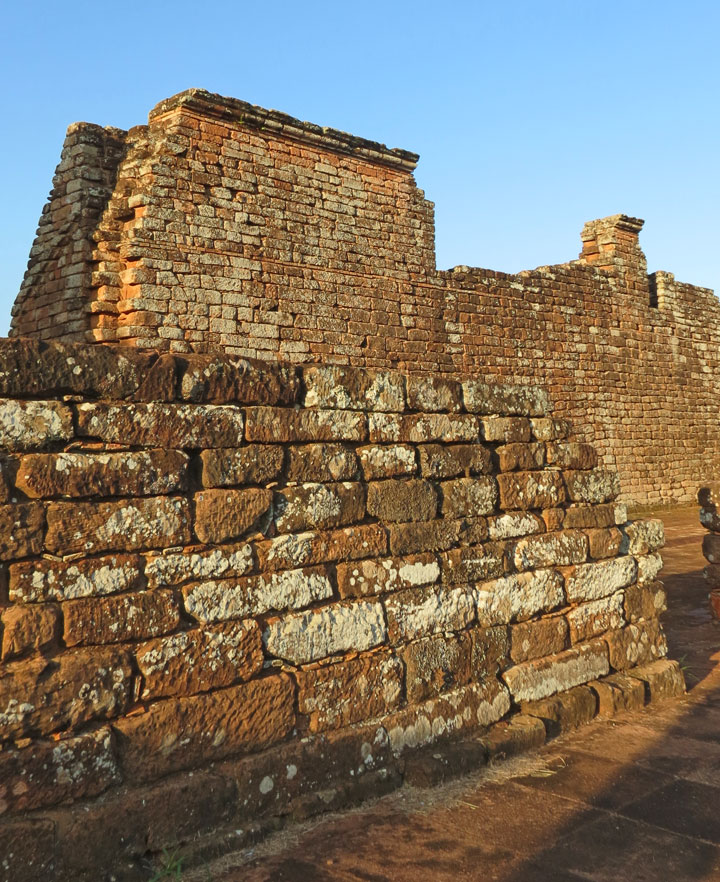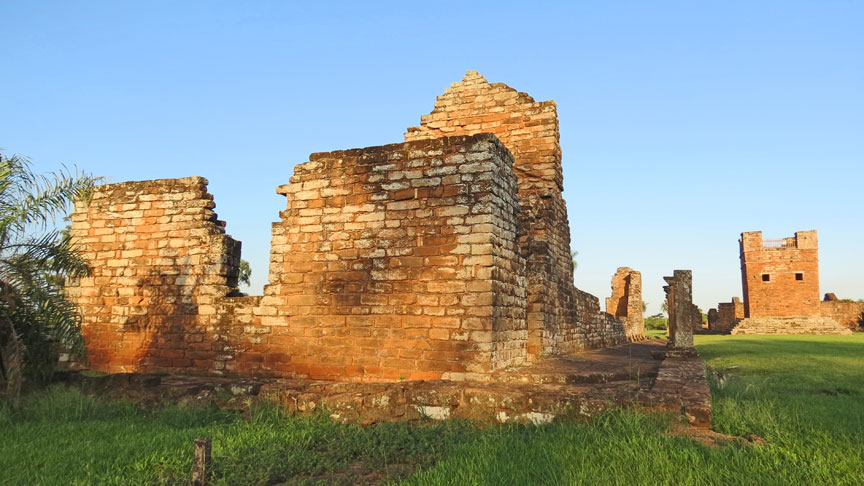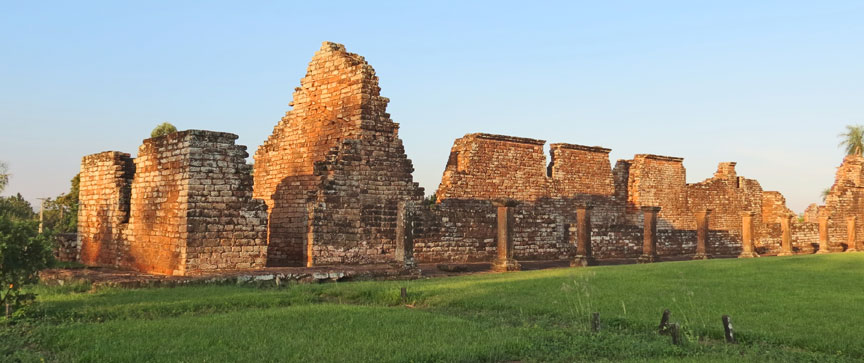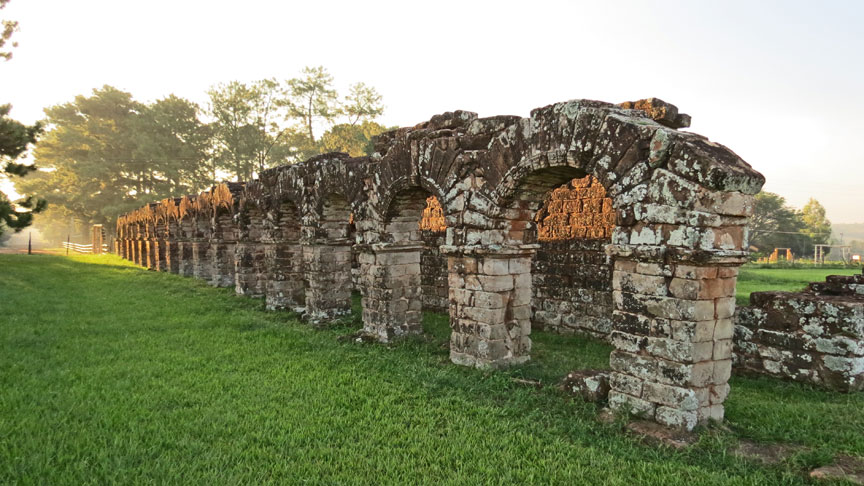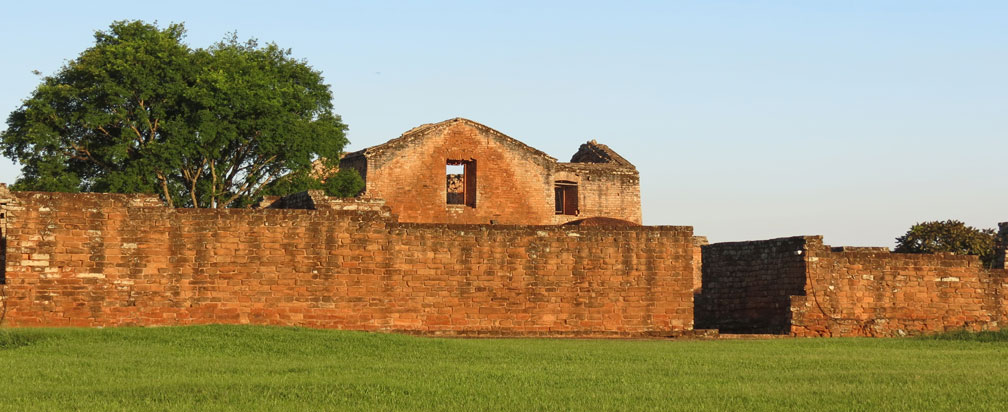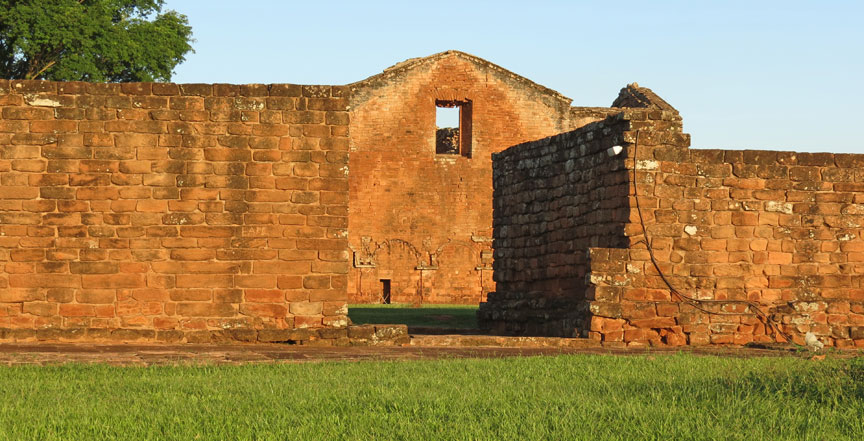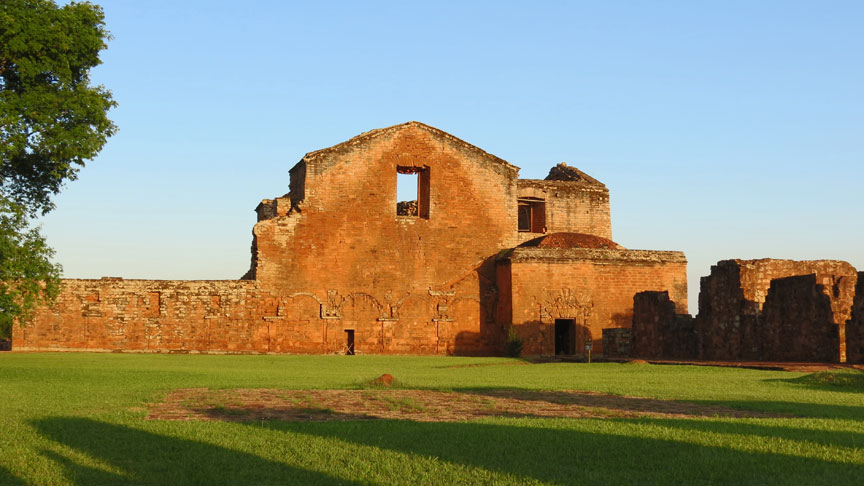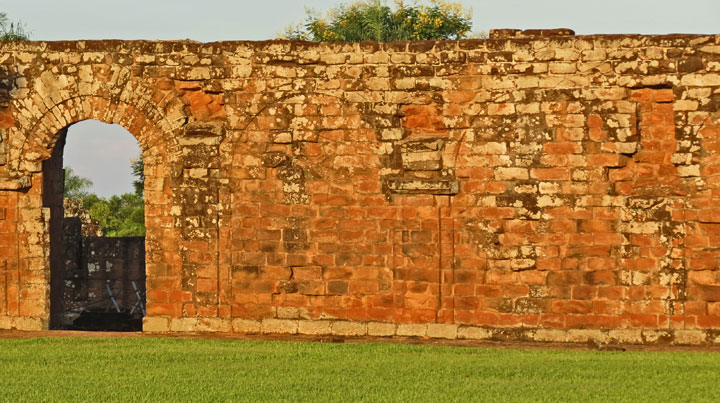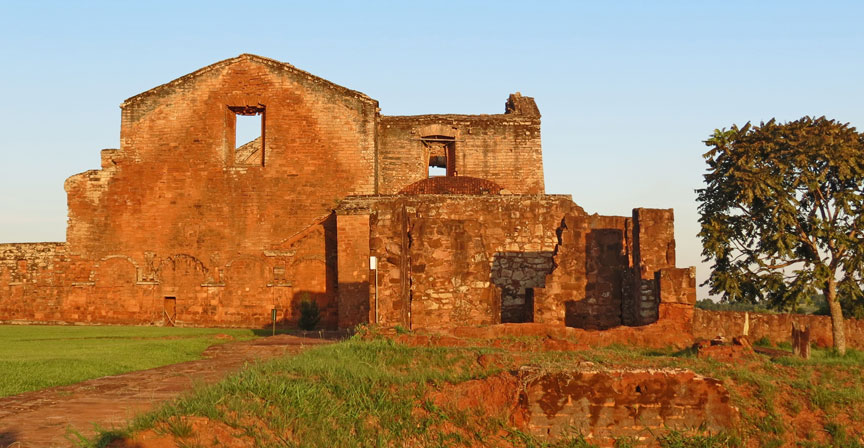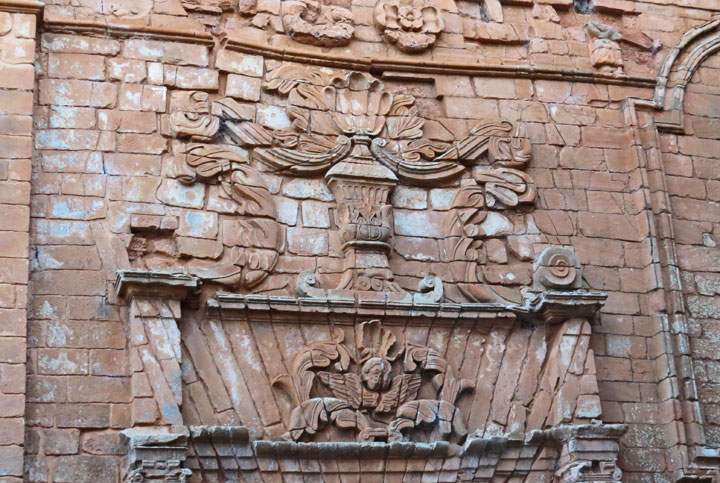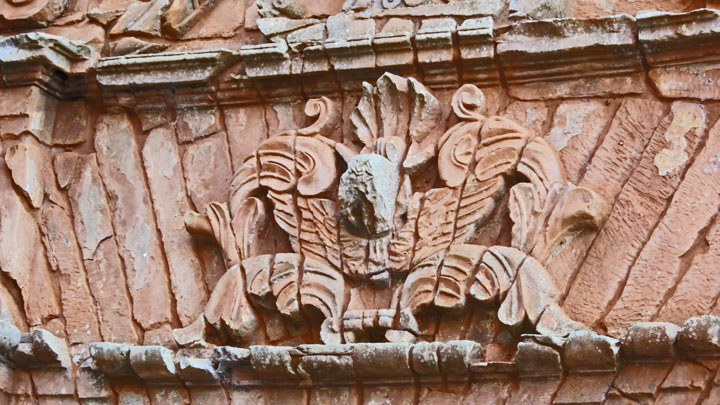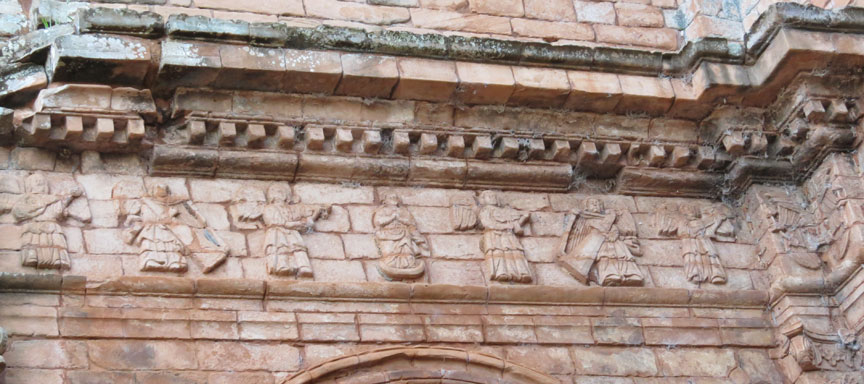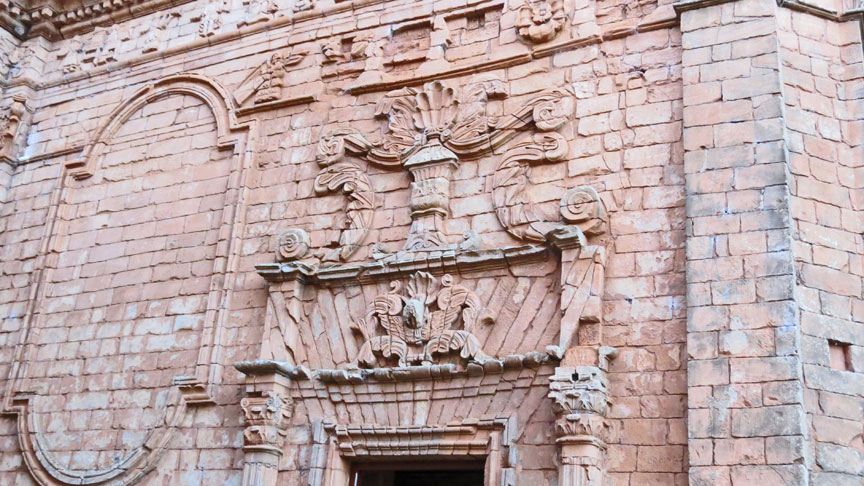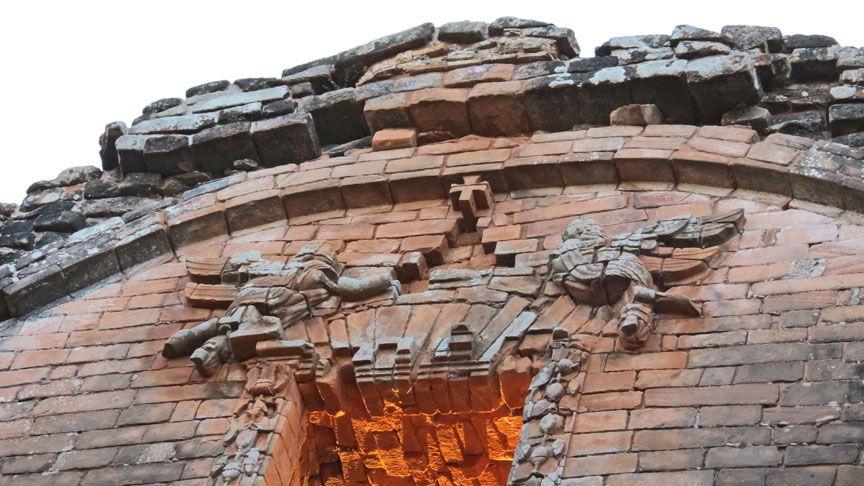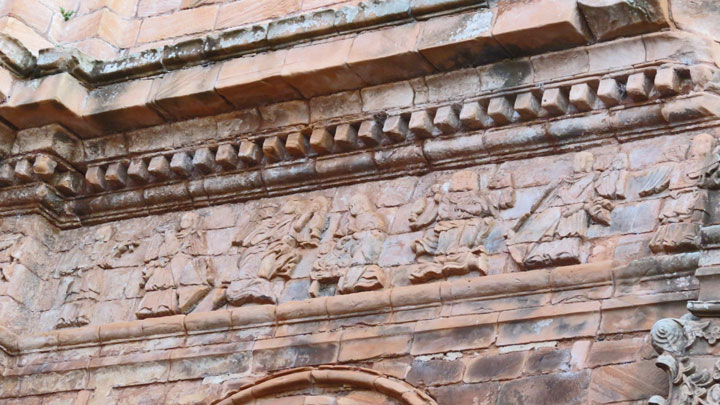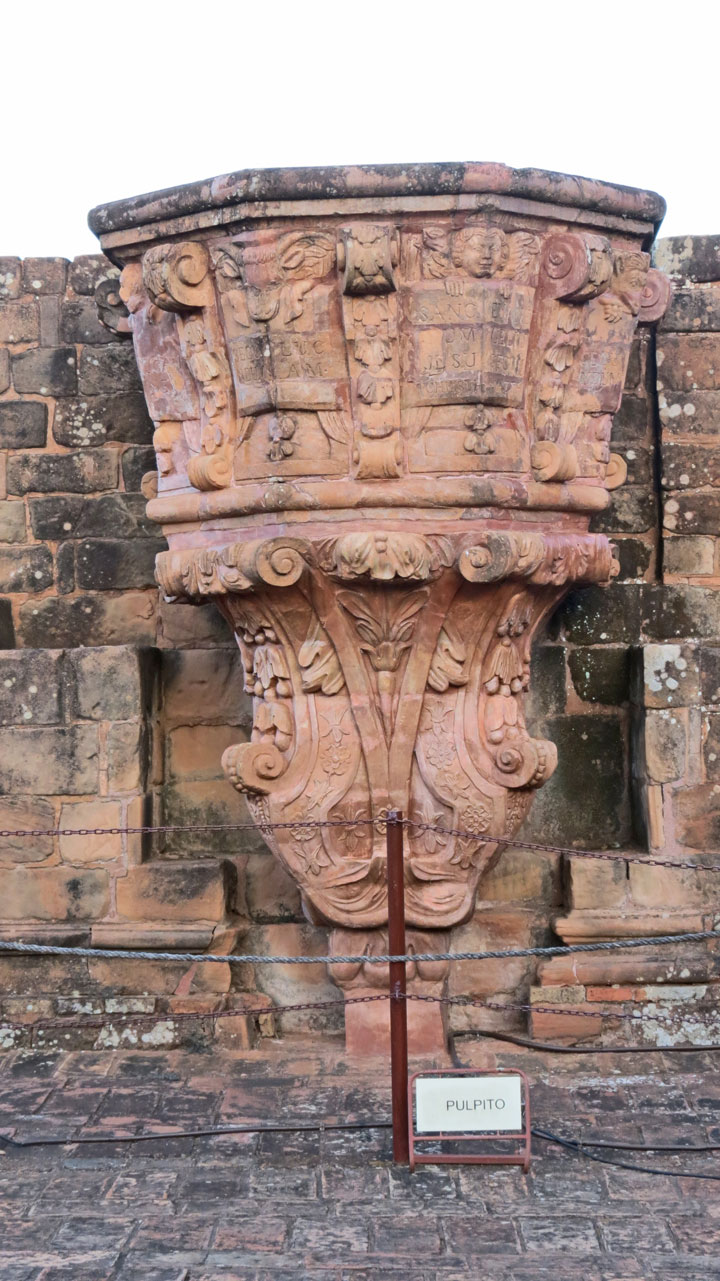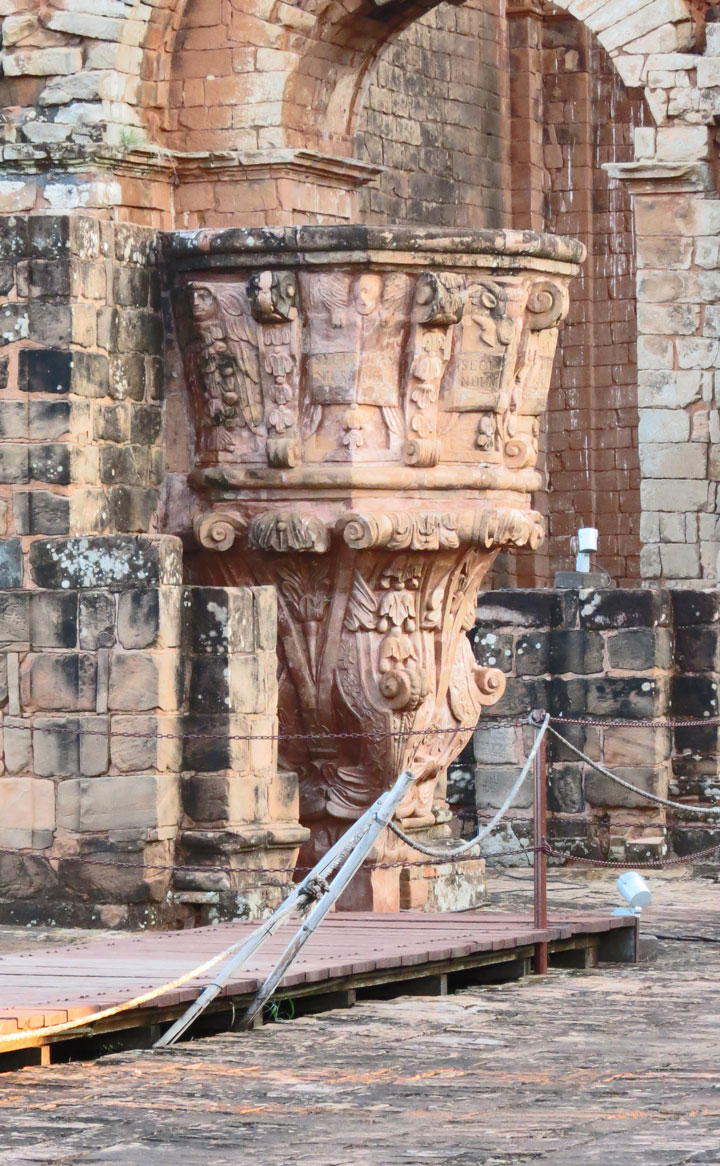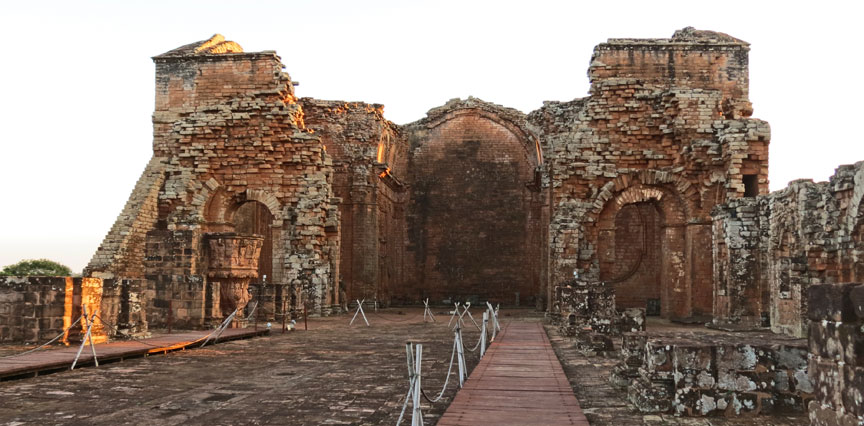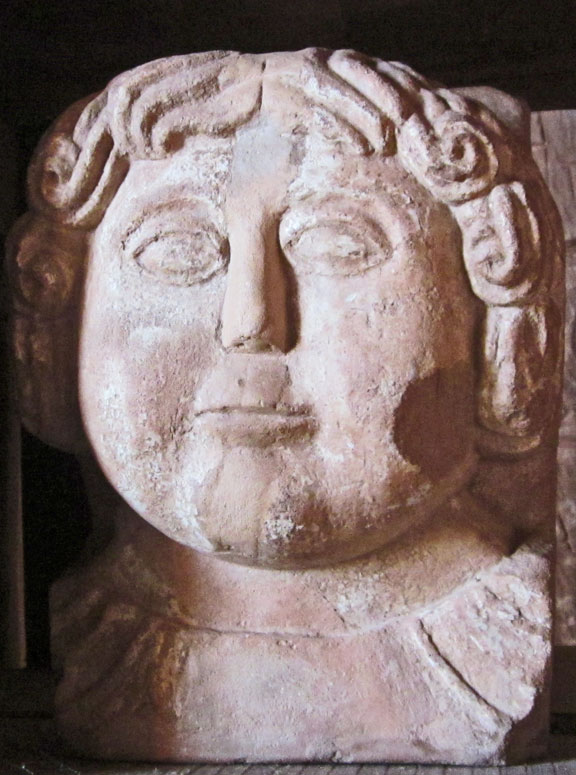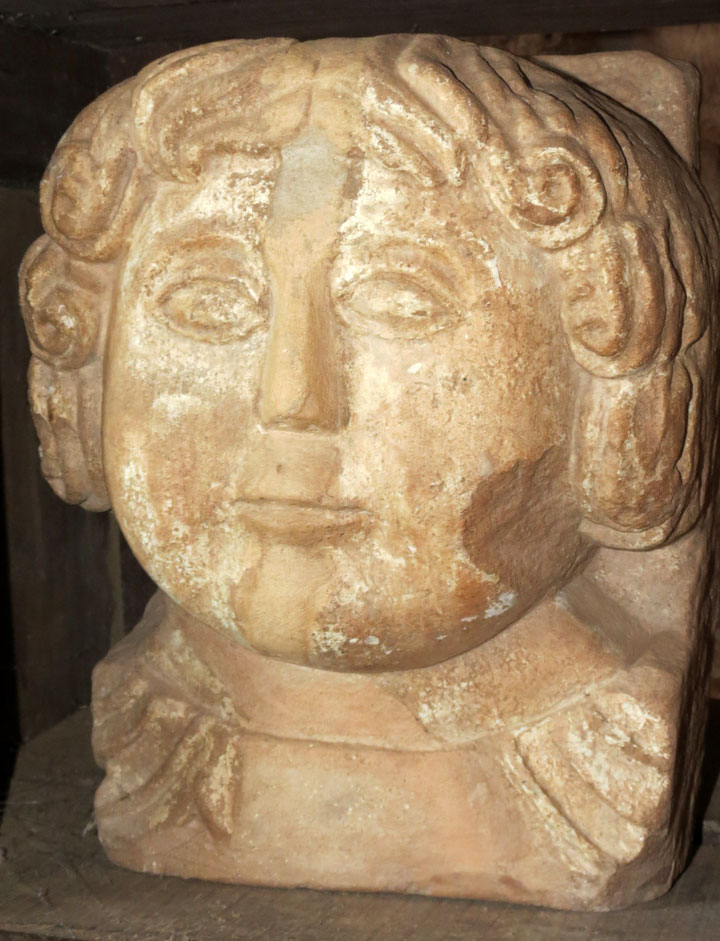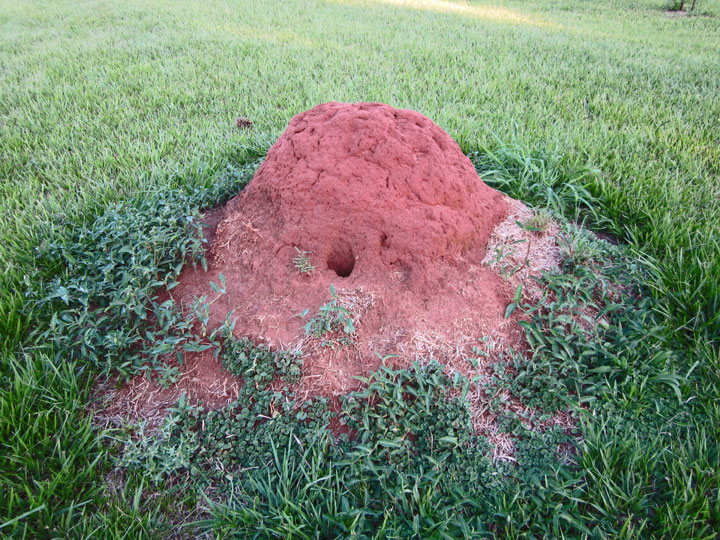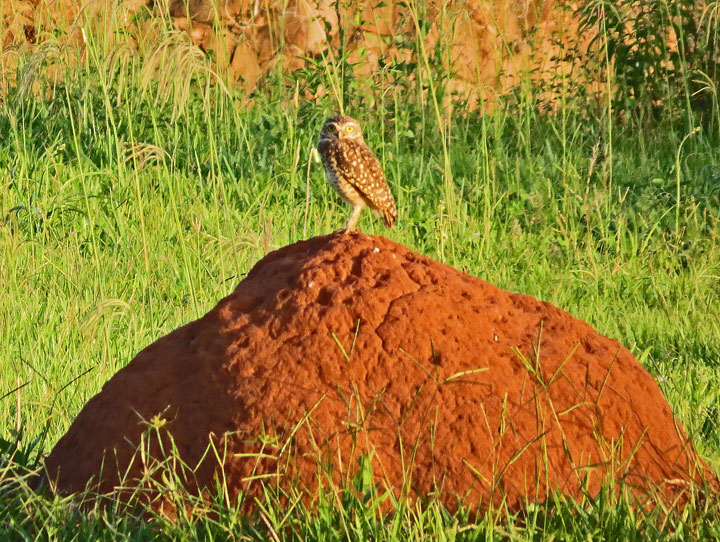

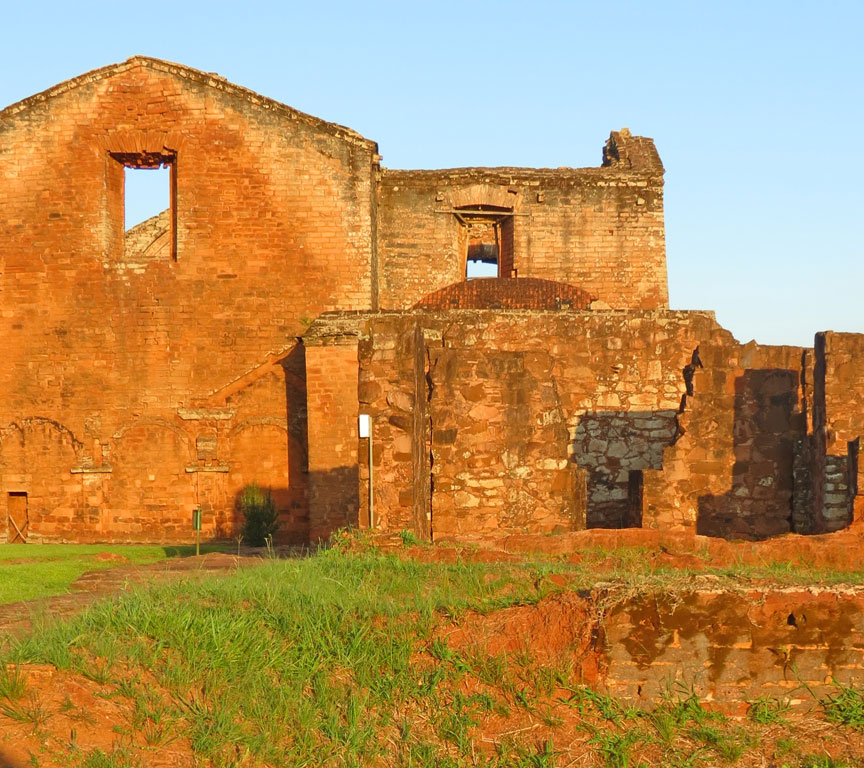
Santísima Trinidad del Paraná Ruins
The Santísima Trinidad del Paraná
Mission is considered the biggest of all the missions. Natives that came from
the missions of San Carlos (nowadays in territory of Argentina) were its
founders in 1712.

La Santisima Trinidad de Paraná, or the Holy Trinity of Paraná is the name of a former Jesuit mission in Paraguay. It is an example of one of the many Jesuit Reductions, small colonies established by the missionaries in various locations in South America throughout the 17th and 18th century. Reducciones were built as miniature city-states that integrated indigenous populations with Christian faith.

La Santisima Trinidad de Paraná, often referred to by the locals as simply the
"ruins of Trinidad" was one of the last of the Jesuit reducciones to be built in
the Paraná River area encompassing southern Paraguay and northern Argentina. It
is also the most highly accessible and the most visited of the historical sites
today. Located near the modern day city of Encarnación, Trinidad was originally
constructed in 1706, the intended self-sufficient city came complete with a
central meeting plaza, a large church meetinghouse, a school, several workshops,
a museum and housing for the local Indian population.

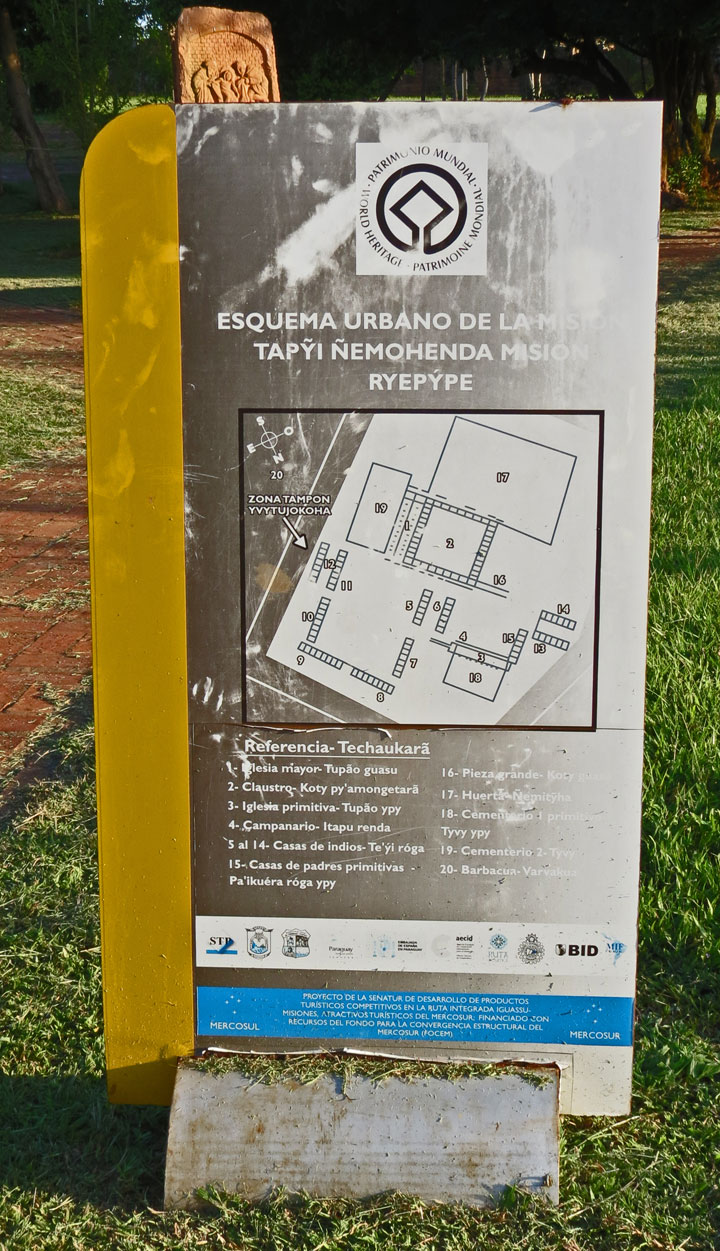
The decline of Jesuit influence in the area led to the abandonment of Trinidad
and the rest of the reducciones, which were left to decay. Owing in part to its
relatively recent construction, Trinidad bore the weathering of time fairly
well, and modern historical societies have maintained the current,
well-preserved state of the ruins to this day. It has also been named one of two
UNESCO World Heritage Sites in Paraguay.
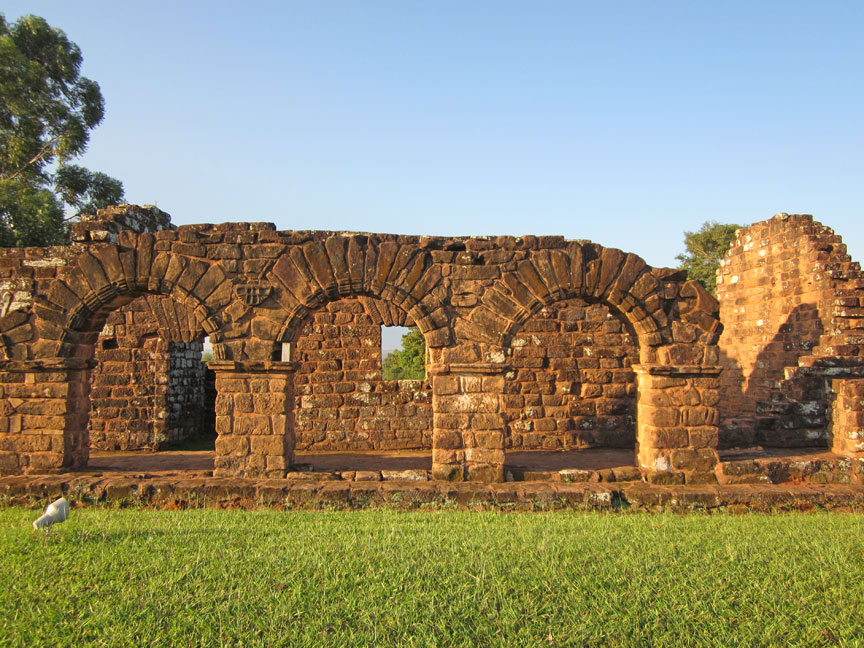
This mission has the biggest built temple among all the Jesuit Missions, with an altar carved in a once piece stone. In it, is represented the persecution of the natives at that time. It has a Central Square, the town’s place of meeting and a museum, located in the old sacristy, are the sculptures and a scale model of the mission.
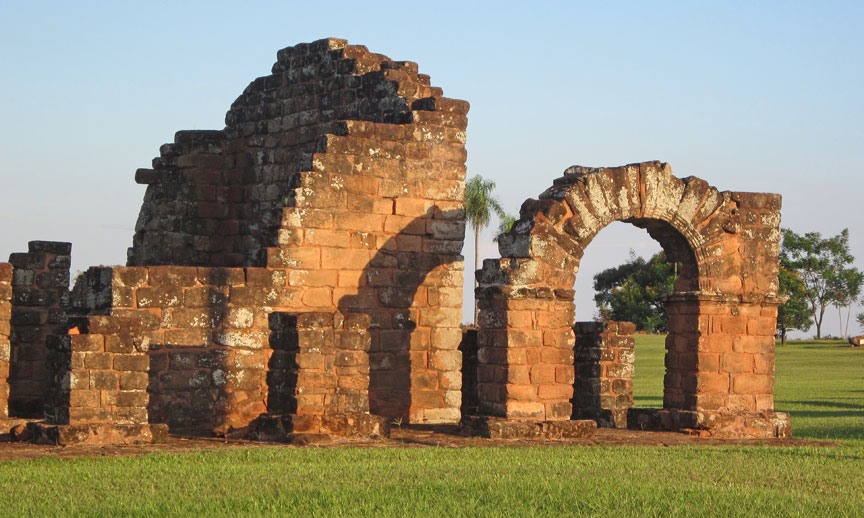
These ruins are being restored and maintained constantly.

It is a Cultural Patrimony of Humankind.
Text from Wikipedia
